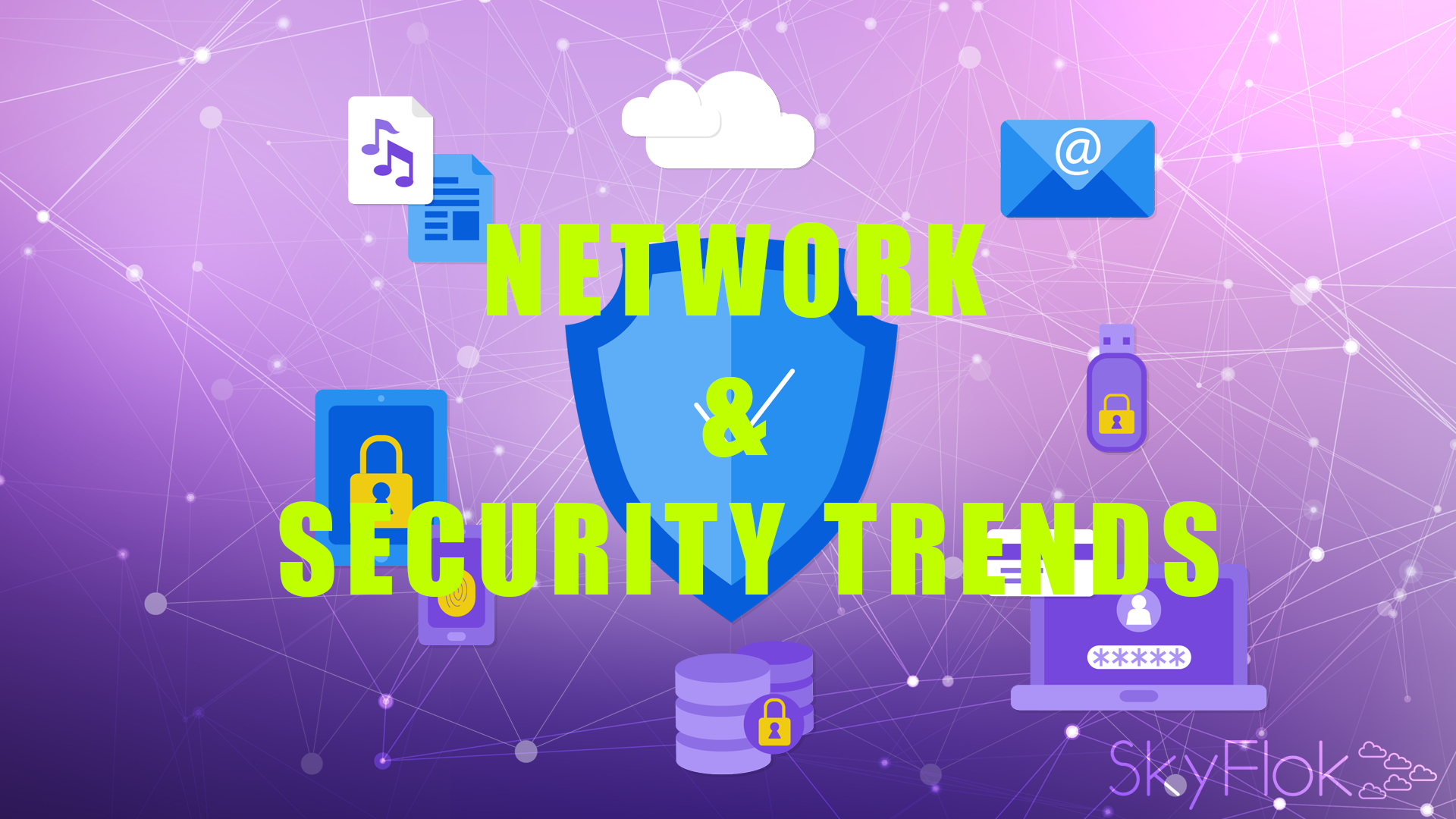As “cybersecurity budgets continue their rapid rise and ransomware continues to be a pernicious treat” we have designed the next-generation cloud storage solution which allows you to share and communicate files with your colleagues and clients without compromising data security.
At SkyFlok, we use innovative technologies to make sure your data remains encrypted and private. We protect you from ransomware attacks by storing all previous versions of your files and providing you with instant access to them.
Subscribe to SkyFlok and get an enterprise-grade storage to protect your files at small-business prices!
As we came to the beginning of 2018, it can be useful to take a look at trends in networking and security that we may see in the coming year. This way, your organization can compare itself to the industry and benchmark itself against its peers and others in the industry. Here are five trends I predict will carry the IT narrative this year.
1. We will see more organizations treating all endpoints and networks as untrusted.
Instead of treating the firewall as a network security boundary, with the wild west of the Internet sitting out there completely untrusted, while treating all of the devices inside the firewall as totally trusted and secure and believing nothing bad can happen inside the private network, I believe we will see a gradual yet consistent move toward the endpoint being the security boundary and all networks, regardless of firewall status, becoming untrusted. While this makes network administration a little more difficult and less transparent at the start, over time I believe one will find it provides numerous security dividends, such as – in principle – limiting the spread of malware that has already overtaken one system and making centralized management much more powerful, as policy engines understand how to touch systems that were previously considered remote and thus unmanageable with traditional tools.
2. Cybersecurity budgets will continue their rapid rise
While simply throwing money at shiny security objects does not (sadly) make you any safer from threats, there is no denying that improving your security profile in any meaningful way usually does involve spending some budget money on devices and services. Much of the low hanging security fruit has already been plucked; what remains requires forking over cash, either to upgrade operating systems, move workloads to more secure locations, purchase better edge protection and threat modeling devices, or third party software to manage disaster recovery. J. P. Morgan Chase, the large financial institution, recently boasted of their billion-with-a-B cybersecurity budget. Few of us can afford that level of investment, but new technologies, edge devices, and value added services from Internet providers can make a significant difference in your organization’s overall security posture, and I firmly believe we will see, in aggregate, much more spending on security than in years past.
3. Cutting costs elsewhere in IT will find a renewed importance in 2018
To pay, either in part or fully, for the increase in cybersecurity budgets, the new mantra in IT in 2018 will be to do more with less. Whether that means decommissioning legacy servers that are expensive to run and maintain in favor of less expensive cloud services that come out of an operating expense budget as opposed to a capital expense budget, or finding new ways to consolidate operations and remove duplicative or unnecessary applications and services, delivering the same or better results for less money will be one of the fundamental charges for IT directors across the globe in the new year. This could come in the form of increased network virtualization, prioritizing projects that have a more immediate business payoff or return of or on investment, and cutting down on wasteful IT spend, particularly with consultants and service providers.
4. Wide area network (WAN) bandwidth demand will increase
As more services move to the public or hybrid cloud, more data gets synchronized and transmitted to and from different locations around the globe, and more devices and services come online and consume bandwidth (see: Things, the Internet of), your organization’s links to the global Internet will become more saturated. In 2018 demand for more WAN capacity will grow to satisfy this increased need for network capacity and headroom. There are solutions like software defined wide area networking (SD-WAN) which can bring together multiple WAN links of different mediums and providers and intelligently route traffic among those pipes, and I believe these WAN management solutions will enjoy increased popularity in the new year to come. Other services like increased availability of fiber optic service to the premises and direct links to cloud service providers like Microsoft’s Azure ExpressRoute also fall under this category.
5. Ransomware will continue to be a pernicious threat
I predict ransomware will evolve to become even more brazen and attempt to take advantage of serious vulnerabilities in network protocols and software. We may even see ransomware that attacks software bugs without requiring a user to open an e-mail attachment to deliver its payload. Administrators and IT directors everywhere will need to take stock of their current backup and recovery procedures and make sure that they can restore individual files as well as application servers and web services in as minimal amount of time as possible. Perhaps finding new backup software and services are in order: these vendors find themselves fighting against ransomware as well.
Wrapping it up: I see security (and the attendant backup and disaster recovery tools) and bandwidth as the main themes of 2018 while IT continues to try to deliver more value and return on investment at less cost.
By Doug Hazelman







